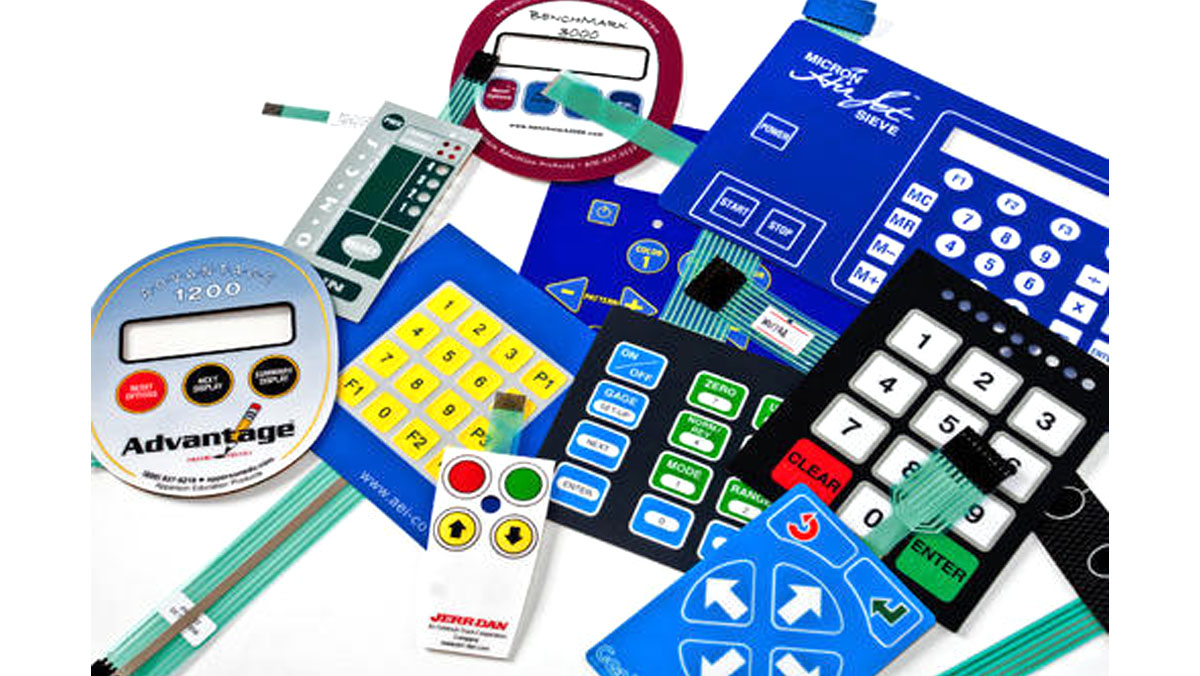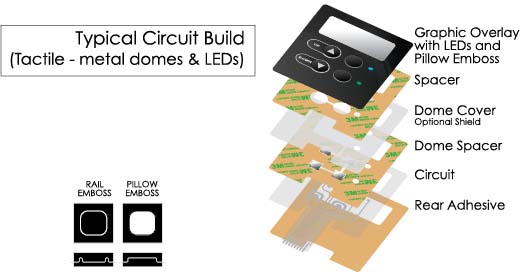Comprehending Membrane Switches: The Key to Dependable and long lasting Controls

What Are Membrane Layer Switches?
Membrane switches are an advanced option in the world of individual interface modern technology, combining functionality and design perfectly. These gadgets function as an interface between individuals and electronic systems, integrating several components into a compact format. Usually built from versatile, thin layers of materials, membrane layer buttons are created to react to touch, making it possible for customers to connect with equipment and electronic devices effectively.
The primary elements of a membrane layer button include a printed circuit layer, visuals overlay, and a spacer layer that protects against unplanned activation. The visuals overlay can be personalized to reflect brand name identity or user preferences, improving aesthetic appeals while ensuring use. Membrane layer buttons are frequently used in various applications, consisting of medical devices, customer electronics, and industrial tools, owing to their longevity and resistance to environmental elements such as wetness and dust.
Among the crucial advantages of membrane buttons is their capability to stand up to deterioration, making them perfect for high-traffic settings. Additionally, they are lightweight and need minimal room, enabling innovative layouts in item development. Overall, membrane switches represent a useful and reliable choice for contemporary electronic interfaces, marrying technology with user-centric layout principles.
Exactly How Membrane Layer Changes Job
The procedure of membrane changes depend upon a basic yet effective system that converts individual input into electronic signals. These buttons consist of several layers, typically consisting of a graphic overlay, a spacer layer, and a circuit layer. When a customer presses the switch, the top layer deforms, enabling a conductive aspect in the circuit layer to reach an equivalent conductive pad on the bottom of the graphic overlay. This get in touch with shuts the circuit and sends out an electronic signal to the gadget, showing that the button has been triggered.
The layout of membrane switches can differ, yet they usually incorporate domes or tactile elements to offer comments to the user, improving the general experience - membrane switch. The products utilized in membrane switches, such as polyester or polycarbonate, add to their toughness and resistance to ecological variables, consisting of dampness and dirt. The printed circuits are usually enveloped, which protects them from wear and tear over time.
Advantages of Membrane Layer Buttons

Furthermore, membrane layer buttons are recognized for their resilience. Built from robust materials, they are immune to dirt, dampness, and physical wear, which significantly extends their lifespan compared to traditional mechanical buttons. This sturdiness makes them specifically appropriate for high-traffic environments and applications needing long life.
An additional substantial benefit is the convenience of cleansing and maintenance. The smooth surface of membrane layer switches over decreases dirt build-up and is usually invulnerable to spills, making them suitable for setups that need frequent sanitization.
Moreover, membrane layer buttons supply a structured profile, resulting in a thinner design that can be incorporated right into various devices without adding mass. This attribute not just improves the aesthetic allure but also adds to an extra ergonomic product design.
Applications of Membrane Layer Switches
Straightforward and flexible, membrane buttons find applications throughout a large range of markets, consisting of clinical gadgets, consumer electronic devices, and industrial devices. In the medical area, these switches are integral to gadgets such as diagnostic devices, client monitoring systems, and mixture pumps, where reliability and convenience of cleaning are critical. Their capacity to maintain and hold up against severe settings functionality makes them perfect for such applications.

In consumer electronic devices, membrane switches are utilized in items like microwaves, washing makers, and remote controls read the full info here - membrane switch. Their smooth layout allows for intuitive interface, boosting the overall individual experience while providing toughness and resistance to tear right here and use
Commercial devices additionally gains from membrane switches, especially in control panels for equipment and automation systems. These buttons offer security versus dirt and dampness, ensuring consistent performance in tough environments. Their adjustable functions enable makers to tailor them to certain functional requirements, improving effectiveness and performance.
Selecting the Right Membrane Change
When choosing a membrane switch, it is necessary to think about various factors that influence performance and viability for details applications. The main considerations include ecological problems, responsive comments, toughness, and style specifications.
First, assess the operating setting; buttons exposed to wetness, chemicals, or extreme temperatures call for certain materials to ensure long life and performance. Next off, examine the need for responsive comments. Depending on customer interaction, some applications might gain from a tactile feedback to verify activation, while others might prefer a non-tactile layout for aesthetic reasons.
Longevity is one more crucial variable; membrane buttons need to be created to endure constant use, influences, and abrasion. Guarantee the picked switch can endure the anticipated lifecycle, particularly in high-usage situations.

Verdict
In conclusion, membrane layer changes work as essential parts in the design of reliable and sturdy control systems across numerous markets. Their portable style, incorporated with robust construction and personalized functions, boosts user communication while guaranteeing long life in demanding environments. The adaptability of membrane layer switches enables tailored options that fulfill particular functional requirements, reinforcing their value in contemporary technology. As sectors remain to develop, the significance of incorporating reliable membrane switch remedies can not be overstated.
Membrane layer switches over stand for a crucial aspect of modern interface style, blending performance with durability in different applications.Membrane switches are an innovative option in the world of customer interface modern technology, incorporating capability and layout flawlessly. Commonly created from adaptable, slim layers of products, membrane layer switches are developed to respond to touch, enabling individuals to engage with equipment and electronic gadgets effectively.
The design of membrane layer buttons can vary, but they frequently incorporate domes or responsive components to supply comments to the individual, enhancing the visit this web-site total experience.In verdict, membrane layer changes serve as essential parts in the style of resilient and reputable control systems throughout different industries.